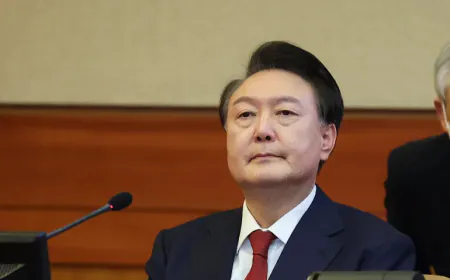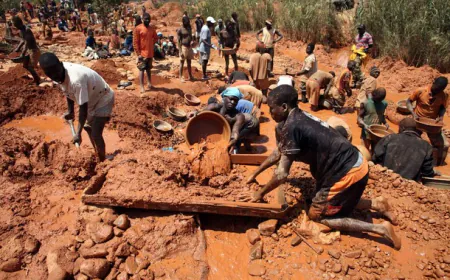South Korea’s Deadliest Wildfires Kill 27, Displace Thousands
South Korea's worst wildfires have killed 27, destroyed 325 structures, and forced over 37,000 to flee as helicopters battle blazes.

South Korea Battles Worst-Ever Wildfires as Death Toll Rises to 27
Cheongsong, South Korea – March 27, 2025 — South Korea is grappling with its most devastating wildfires on record, which have killed 27 people, injured 32, and forced more than 37,000 residents to flee their homes. As helicopters continued to drop water over blazing forests on Thursday, emergency responders struggled to contain the widespread destruction caused by the fires sweeping through the country’s southeastern regions.
The wildfires, which ignited last Friday, have consumed 36,010 hectares (88,980 acres) of land and destroyed 325 buildings and structures, according to the national disaster response center. Despite a massive mobilization involving over 9,000 personnel and around 120 helicopters, containment efforts have been severely hindered by gusty winds and prolonged dry weather.
While light rain was forecast for Thursday, Korea Forest Service chief Lim Sang-seop warned that the expected amount—less than 5 millimeters (0.2 inches)—would likely offer little relief.
Among the fatalities are a helicopter pilot who died during firefighting operations on Wednesday, as well as four other emergency workers who perished earlier after becoming trapped by rapidly advancing flames. Authorities also confirmed that many of the civilian victims were elderly residents in their 60s or older, some of whom either could not evacuate in time or refused evacuation orders.
Initial investigations suggest human negligence may have contributed to the outbreak of several fires. Incidents include individuals burning dry grass while maintaining family burial sites or sparks generated during welding work.
Addressing the crisis during a government meeting, Lee Han-kyung, deputy head of the national disaster response center, said the wildfires highlight “the reality of the climate crisis that we have yet experienced,” according to Yonhap News Agency.
Climate scientists globally have long warned that rising temperatures are driving more frequent and severe natural disasters, from wildfires to floods and extreme heatwaves, inflicting significant human and economic losses.
The most severely affected areas include the city of Andong and the neighboring counties of Uiseong and Sancheong, as well as the southeastern city of Ulsan. On Wednesday night, authorities ordered evacuations in two villages near Andong, including Puncheon—home to the historic Hahoe Folk Village, a UNESCO World Heritage Site dating back to the 14th or 15th century. Hikers were also urged to vacate the scenic Jiri Mountain area due to approaching fire lines.
In Uiseong, the damage extended to the Gounsa Temple complex, originally built in the 7th century. Approximately 20 of its 30 structures were lost, including two culturally significant “treasures”: a pavilion constructed in 1668 and a structure from 1904 commemorating a king’s longevity during the Joseon Dynasty.
In Cheongsong, firefighters and emergency crews worked tirelessly on Thursday to shield religious and cultural landmarks. Near Juwang Mountain, helicopters dumped water as smoke poured from the slopes. At a nearby Buddhist temple, workers covered a stone pagoda and other ancient structures with flame-resistant material while firefighters doused surrounding areas with water.
The Korea Forest Service has issued its highest-level wildfire alert, requiring increased deployment of local emergency personnel, stricter forest access controls, and the suspension of military live-fire drills in vulnerable regions.
What's Your Reaction?


































